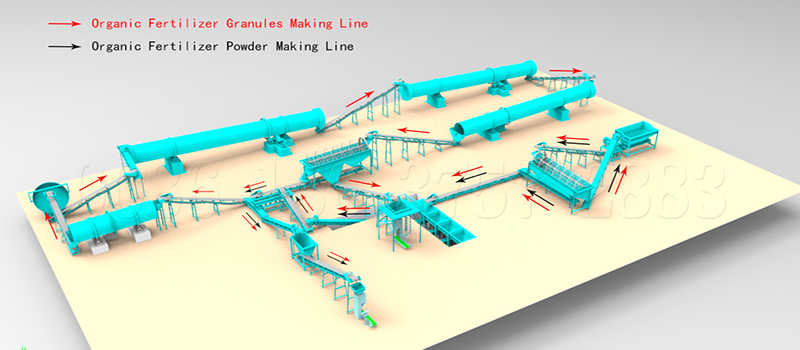
What are the large-scale organic fertilizer equipment? The so-called large-scale organic fertilizer production equipment generally refers to organic fertilizer equipment with a large production scale and relatively high investment cost, and can also be called a large-scale organic fertilizer production line. Due to the small production scale of the small-scale organic fertilizer production line, manual auxiliary operations are required in many links, and it is difficult to complete the processing and large-scale production of a large number of raw materials. There are more and more large-scale concentrated breeding areas, which will inevitably cause small-scale organic fertilizer production enterprises to gradually shift to large and medium-sized organic fertilizer production enterprises, and the construction of large-scale organic fertilizer equipment and production lines has also become an inevitable choice. Today, I will talk to you about the topic of large-scale organic fertilizer production equipment.

Granular and powder organic fertilizer production line
First, let’s understand how to distinguish the size of the organic fertilizer equipment and the investment cost
- According to the output, the production of 1 ton of organic fertilizer per hour is a small-scale organic fertilizer production equipment (small-scale organic fertilizer production line), and the price is generally between 30,000-60,000 dollars, which can meet the needs of families and small farms.
- According to the output, the production of about 5 tons of organic fertilizer per hour is a medium-sized organic fertilizer production equipment (medium-sized organic fertilizer production line), which is the best medium-sized organic fertilizer production equipment in the market and customer evaluations, and it is also in large market demand. The investment price Generally between 60,000-100,000 dollars.
- According to the output, the production of more than 10 tons of organic fertilizer per hour is a large-scale organic fertilizer production equipment (large-scale organic fertilizer production line), which is an essential equipment for large-scale organic fertilizer production and processing enterprises, and is generally used in large-scale fertilizer processing enterprises. The investment price is more than $100,000.







